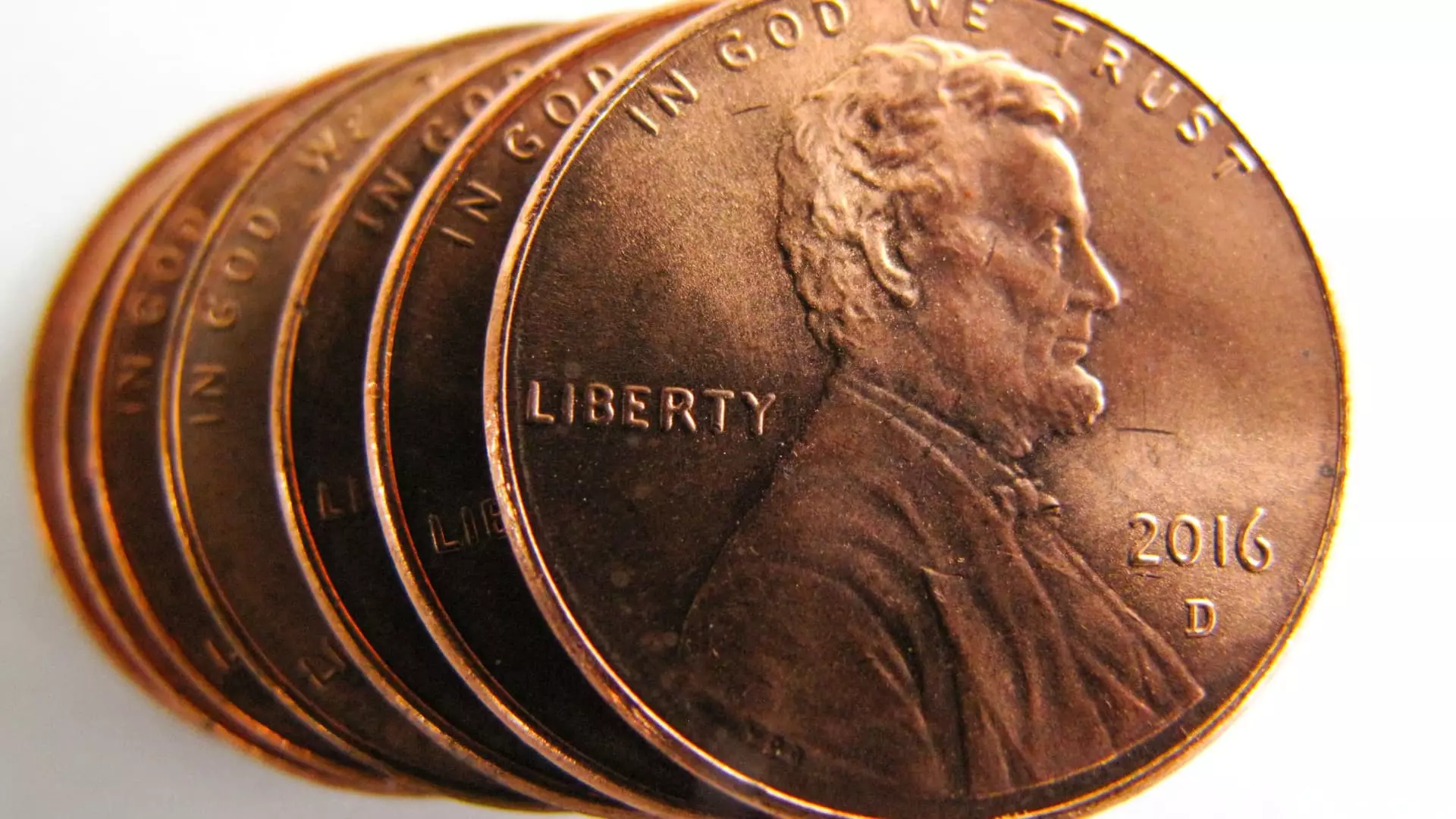The U.S. penny, a symbol of American commerce, is facing a grim fate. The decision by the U.S. Treasury to cease the production of pennies comes not as a shock, but rather as an overdue acknowledgment of a fiscal reality that has long been ignored. With the cost of producing each cent now exceeding its face value, allowing this outdated coin to linger in the currency system is a misallocation of American resources. While the projected savings of $85 million might seem trivial against a backdrop of a $6.8 trillion budget, it nevertheless highlights a broader trend in American fiscal policy: an inability to let go of archaic institutions and practices that no longer serve the public interest.
The Illogical Cost of Production
The financial implications of minting pennies are staggering. Producing each penny now costs an astounding 3.69 cents, a figure that has soared by 20% over the past year alone. This alarming trend raises an essential question: why continue clinging to a currency denomination that strikes a serious blow to consumer and taxpayer interests? Even Senator Mike Lee, a staunch conservative, articulated the absurdity of wasting taxpayer dollars on the production of coins that no private sector business would ever deem viable. His introduction of the “Make Sense Not Cents Act” signals that not even partisan divides can obscure the logic of economic rationality in coinage.
The Path Forward: Rounding Off the Rust
What does a future without pennies look like? As businesses adapt to a world without these pesky coins, rounding prices to the nearest nickel will likely streamline transactions and align pricing practices with the realities of modern commerce. This could signify a constructive cultural shift towards efficiency, where consumers no longer clutch grimly to their penny-filled jars for that elusive free cup of coffee or gas discount. Moreover, as other nations have already demonstrated, phasing out lower denominations can lead to a more straightforward economic environment that better reflects contemporary purchasing power.
A Thorn in the Side of Progress
While some might mourn the loss of the penny as a quaint relic of yesteryear, it is an unnecessary thorn in the side of progress. Previous recommendations by the Federal Reserve to transition away from the penny reflect a pragmatic understanding that coins are simply losing their relevance in an increasingly digital and transaction-based economy. The fear that retirees and collectors may rush to redeem their coins is all too real, yet it is a small price to pay for a necessary leap forward towards a fiscal policy rooted in efficiency and contemporary relevance.
Reflections on Financial Stewardship
The penny debacle demonstrates a significant aspect of financial stewardship – the alignment of currency with societal needs and economic realities. Sticking to the penny amidst soaring production costs exemplifies a mismanagement of resources that can only perpetuate a cycle of inefficiency. While the decision to halt its production showcases a rare moment of bipartisan agreement on the need for fiscal responsibility, it begs the question: what other outdated institutions are we propping up at great cost? As we navigate the complexities of modern governance, the farewell of the penny should serve as both a reflection and a rallying cry for responsible financial management moving forward.


Leave a Reply